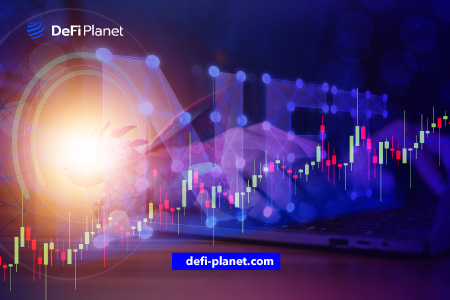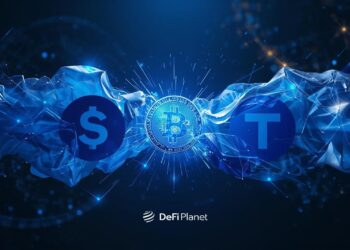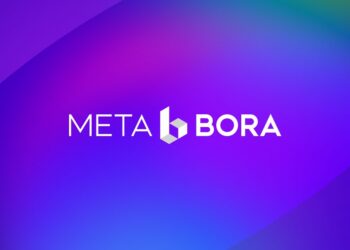Since the introduction of NFTs, there has been a wide range of reactions to these digital tokens. NFT enthusiasts believe they add value to previously unprofitable ventures, whereas those skeptical of this new technology believe it is inefficient and wastes resources.
Although their criticisms have been gradually addressed over the years, NFTs still have a long way to go before they can win over skeptics. While some have come to accept NFTs for the value they hold in the virtual world, others have dismissed them due to their lack of practical application.
A new type of NFT is now emerging, bridging the gap between the physical and virtual realms. This type of NFT is called “phygital NFT.”
This article explores the concept of phygital NFTs and how they bridge the gap between physical and digital assets.
What are Phygital NFTs?
With the advent of NFTs, the term “phygital” has taken on a new and exciting meaning, fueling its meteoric rise in popularity over the last few years. The rise of phygital NFTs is one of the most exciting developments in a new, decentralized technology landscape.
Phygital NFT is one of the most well-known phygital user experiences. Various applications for non-fungible tokens have been developed, providing collectors and investors with novel opportunities to acquire rights to rare or valuable items. The phygital NFT could benefit investors and collectors looking to access new and exciting content or add to their digital collectibles collections.
Components of a phygital NFT include metadata describing digital assets, such as smart contracts that are part of the NFT itself. The Phygital NFT also includes the actual ticket, property, or 3D model. By extending how NFTs can be represented and used in the real world, the term “phygital” provides a credible boost for the development of these technologies. For example, suppose there is a dispute over who owns a piece of property. In that case, an NFT can be used to prove who owns the property in a way that is acceptable to all parties.
For a phygital NFT to be considered valid, the following conditions must be met:
- It must provide a digital asset that customers can purchase.
- It must provide a physical product that can be exchanged for the digital asset.
How Do Phygital NFTs Work?
NFTs are blockchain-based digital assets that are powered by smart contracts. Since each NFT is unique and cannot be exchanged for another token, they are referred to as “non-fungible tokens” rather than “cryptocurrency,” even though they both rely on blockchain technology.
At the time of minting, each NFT is assigned a unique ID, which can’t be changed once it has been recorded in the blockchain. These digital assets may contain any type of metadata besides the unique ID.
Applications of Physical Product-NFT Integration
Increasing customer trust through transparency
Customers’ appetite for more has only grown due to today’s easy access to information. Before making a purchase, consumers will research various brands and products. This means it is more important than ever for businesses to be as transparent as possible to earn and keep their customers’ trust.
Integrating NFTs into physical products can help customers verify the provenance of each product and get a better understanding of their business’s supply chain. NFTs can add a vital layer of transparency that can help your customers trust you. This is because the information is written into the token and can’t be changed because the blockchain is decentralized.
For example, in 2021, Jamaica Blue Mountain Coffee started incorporating NFTs into their bags of roasted coffee. When a customer scans the QR code on their bag, they are taken to a custom-built website for that NFT, where they can learn more about the product and see photos of the farms where the beans were grown, among other things.
Brand protection
Counterfeits harm the reputations of both high-end luxury brands and well-known consumer brands. To combat this problem, high-value items, limited-edition products, and collectibles may benefit from including a certificate of authenticity, but even these items are not immune to forgery.
NFTs eliminate the need for a trusted third party to verify ownership or transferability of the underlying asset because they are immutable and can be verified by anyone with access to the public blockchain.
They can serve as certificates of authenticity that customers can inspect before making a purchase.
Product traceability
NFTs can be used to assign products a distinct digital identity by serializing them. This works like any other serial number, except that its history is recorded in a distributed ledger. This database is more secure and productive than proprietary serial number databases.
Furthermore, each minted physical item is tracked independently of the others. As a result, not only will the original owner be recorded on the blockchain, but so will any subsequent changes in ownership.
As any business owner knows, this information and the ability to track individual items can be beneficial in the long run.
Improved waste management
One issue that NFTs can help with in production management is making products traceable so that both suppliers or sellers and your customers can know where the goods you purchase come from.
They can also include important information on how to dispose of each item in an environmentally friendly manner. This gives the consumer a better understanding of the product’s life cycle.
In addition, NFTs can help to improve and optimize reverse logistics by providing users with clear roadmaps outlining where and how they can return used items for upcycling. This could help start-ups replicate an important aspect of Apple’s successful business model.
Revenue generation from secondary markets
Products made for mass consumption that cost pennies today are often highly sought after by collectors decades later. Imagine reaping some of that reward as the product’s original maker. It is possible to do so by including royalties in the smart contract and minting the product as an NFT. This will allow manufacturers to earn more money whenever their products are traded on other sites.
What Businesses Can Go Phygital?
Most businesses have the potential for and should pursue going phygital. Some sectors, including real estate, banking, and the automobile industry, have adapted remarkably well to the new reality.
They’ve made non-consecutive user experiences possible by designing unique, immersive ecosystems. Users in these ecosystems shift from one setting to another in search of convenience, instant gratification, and meaningful participation.
Virtual reality has long allowed users to explore virtual versions of their ideal homes, drive their ideal cars, and conduct financial transactions from the comfort of their couches.
COVID-19 undoubtedly accelerated things and allowed many businesses that may have been late to the phygital party to join in on the fun.
The retail industry is one such example. For quite some time now, people have had the option to shop for goods and services online. Many popular stores, however, have begun streaming live shopping experiences to make in-store shopping more secure and less crowded. With this, customers can virtually walk through the aisles of their flagship stores and try out products without leaving the comfort of their devices.
The fashion industry is yet another that has made extensive use of the physical NFT features of the Metaverse. In early December 2021, NFT Runway hosted the first-ever virtual fashion event, bringing high-end labels such as Gucci and others into the Metaverse as NFTs.
Phygital has been quickly embraced by the contemporary art world as well. The use of NFTs enables artists to implement a reliable strategy for protecting their creations in a world where both creativity and copycatting thrive. In addition, phygital facilitates the sale of their work to a wider audience.
In Conclusion,
- Phygital products and experiences are still a new concept. As brands gain proficiency with blockchain and NFTs, their use of the phygital concept will spread across all industries.
- Although NFTs are still relatively new, they hold great promise for the future of integrated phygital products. Those who get in early and test the waters may discover a novel application for NFTs that gives them a first-mover advantage and helps their businesses thrive.
- The ultimate goal of phygital NFTs is to improve the brand and consumer experience through the seamless integration of physical and digital assets. Soon, industries like healthcare, finance, and the government will adopt phygital NFTs.
If you would like to read more news articles like this, visit DeFi Planet and follow us on Twitter, LinkedIn, Facebook, and Instagram.
“Take control of your crypto portfolio with MARKETS PRO, DeFi Planet’s suite of analytics tools.”





















